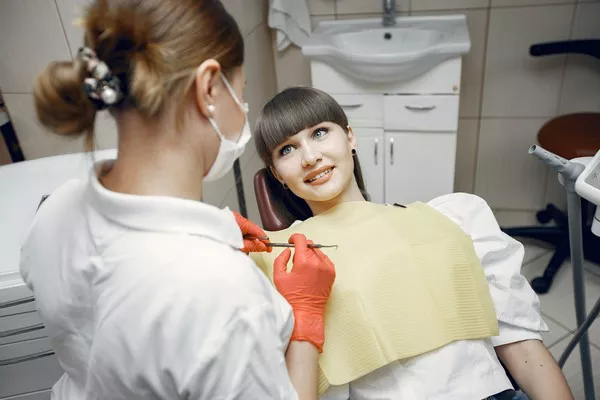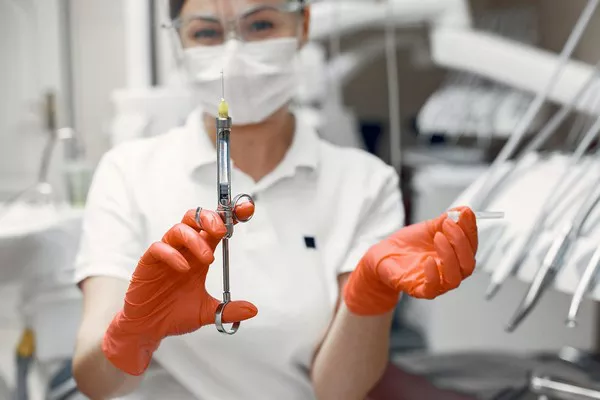Orthodontic braces have become indispensable in modern dentistry, offering effective solutions for correcting dental misalignment. The majority of orthodontic braces are made from metal alloys, such as stainless steel and titanium. One remarkable characteristic of these metal braces is their ability to resist corrosion, even when exposed to a harsh oral environment. In this article, we delve into the scientific principles behind why metal orthodontic braces do not corrode. Understanding this phenomenon is crucial for both patients undergoing orthodontic treatment and dental professionals involved in the field.
Composition of Metal Alloys
Metal orthodontic braces are typically fabricated using high-quality stainless steel or titanium alloys. These metals possess an exceptional resistance to corrosion due to their specific chemical composition. Stainless steel is an alloy primarily composed of iron, chromium, nickel, and small amounts of other elements. The presence of chromium forms a protective layer on the surface of the braces, known as passivation. This thin oxide layer prevents the underlying metal from reacting with its surroundings, effectively shielding it from corrosion.
Titanium, another common material used in orthodontics, exhibits excellent biocompatibility and high strength-to-weight ratio. It forms a naturally occurring oxide layer upon exposure to oxygen, rendering it highly resistant to corrosion. Additionally, titanium’s stable oxide layer promotes osseointegration, making it an ideal choice for orthodontic implants.
Passivation and Passive Film Formation
The process of passivation plays a vital role in preventing the corrosion of metal orthodontic braces. Passivation occurs when a protective film forms on the surface of a metal, inhibiting further corrosion. In the case of stainless steel, the passive film consists of a layer of chromium oxide, which self-repairs when damaged.
Passive films are formed through a combination of chemical reactions and electrochemical processes. When exposed to an oxygen-rich environment, such as saliva, the metal surface reacts with oxygen molecules to create metal oxides. In the case of stainless steel, this reaction results in the formation of chromium oxide (Cr2O3) on the surface. This oxide layer acts as a barrier, preventing the underlying metal from interacting with corrosive substances present in the oral cavity.
The passive film’s self-repairing properties are attributed to the presence of chromium in stainless steel alloys. If the passive film is damaged, for example, due to physical wear or exposure to acid-containing foods, the chromium atoms present in the metal will react with the surrounding oxygen to reform the protective oxide layer. This mechanism ensures that the stainless steel braces remain corrosion-resistant throughout the duration of orthodontic treatment.
Corrosion Resistance Factors
Several factors contribute to the remarkable corrosion resistance exhibited by metal orthodontic braces:
a. Surface Finish:
A smooth, polished finish on the surface of metal braces helps prevent the accumulation of plaque and bacteria, reducing the likelihood of localized corrosion. Proper cleaning and maintenance of braces are essential to maintain their corrosion-resistant properties.
b. pH and Oral Environment:
The oral environment can vary in terms of pH due to factors like food intake and oral hygiene practices. While stainless steel braces can withstand a wide range of acidic and alkaline conditions, prolonged exposure to extremely low or high pH levels may compromise the passive film’s integrity. Maintaining good oral hygiene and regular dental check-ups are vital for preventing the accumulation of plaque and minimizing the risk of corrosion.
c. Orthodontic Archwires and Elastomeric Ligatures:
Although not directly related to the braces themselves, the materials used for archwires and elastomeric ligatures can influence the corrosion resistance of metal braces. It is important to choose compatible materials that do not introduce galvanic corrosion or chemical reactions that might compromise the braces’ integrity.
d. Saliva Composition:
Saliva contains a variety of minerals and enzymes, some of which can influence the corrosion behavior of metal braces. However, saliva generally acts as a protective agent by providing a continuous supply of ions necessary for passive film regeneration.
Are braces corrosive?
No, braces themselves are not corrosive. The term “corrosion” refers to the process of deterioration or degradation of a material due to chemical reactions with its environment. Metal orthodontic braces, such as stainless steel and titanium alloys, are specifically designed to resist corrosion.
However, it’s important to note that while braces do not corrode, they can be susceptible to localized discoloration or staining caused by external factors such as certain foods, beverages, or poor oral hygiene. These factors can lead to the accumulation of plaque and bacteria around the braces, potentially resulting in aesthetic concerns. This is why maintaining good oral hygiene practices, including regular brushing, flossing, and dental check-ups, is crucial during orthodontic treatment to prevent staining and maintain the appearance of the braces.
Conclusion
Metal orthodontic braces have revolutionized dental treatment by offering effective solutions for correcting dental misalignment. The resistance of these braces to corrosion is attributed to their compositional elements, passivation process, and the formation of a protective oxide layer on their surface. Factors such as surface finish, oral environment, orthodontic accessories, and saliva composition also influence the overall corrosion resistance of the braces. Understanding these principles ensures the longevity and effectiveness of metal orthodontic braces in providing patients with beautiful, healthy smiles throughout their treatment journey.
Related Topics:































